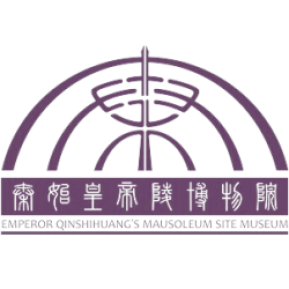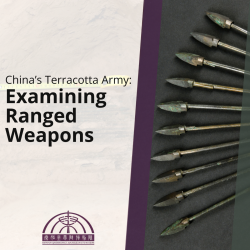Emperor Qin Shihuang's Terracotta Army Museum
These collections provide a unique opportunity to explore Emperor Qin Shihuang's Mausoleum Complex, home to China's Terracotta Army. Objects found in Emperor Qin Shihuang’s elaborate tomb complex, which covers a total area of 17.6 square miles, make up the majority of surviving objects from the Qin dynasty, a significant period in Chinese history. They are some of the best archaeological evidence researchers have for understanding the spiritual beliefs, military practices, and values of the ruler responsible for unifying China for the first time in its history.
Collections created by the Emperor Qin Shihuang's Mausoleum Site Museum in collaboration with the Smithsonian Office of Educational Technology and the Freer Gallery of Art and Arthur M. Sackler Gallery, the Smithsonian's National Museum of Asian Art.
Emperor Qin Shihuang's Terracotta Army Museum's collections
China’s Terracotta Army: The Terracotta Warriors
 Emperor Qin Shihuang's Terracotta Army Museum
Emperor Qin Shihuang's Terracotta Army Museum
China's Terracotta Army: Examining Bronze Chariots and Horses
 Emperor Qin Shihuang's Terracotta Army Museum
Emperor Qin Shihuang's Terracotta Army Museum
China's Terracotta Army: Exploring Pit 0007
 Emperor Qin Shihuang's Terracotta Army Museum
Emperor Qin Shihuang's Terracotta Army Museum
China's Terracotta Army: Examining Armor and Shields
 Emperor Qin Shihuang's Terracotta Army Museum
Emperor Qin Shihuang's Terracotta Army Museum
China's Terracotta Army: Information and Teaching Resources
 Emperor Qin Shihuang's Terracotta Army Museum
Emperor Qin Shihuang's Terracotta Army Museum
China's Terracotta Army: Exploring Artistic Practices
 Emperor Qin Shihuang's Terracotta Army Museum
Emperor Qin Shihuang's Terracotta Army Museum
Colors & Conservation of the Terracotta Army
 Emperor Qin Shihuang's Terracotta Army Museum
Emperor Qin Shihuang's Terracotta Army Museum
Take a closer look at Emperor Qin Shihuang's Bronze Chariots and Horses
 Emperor Qin Shihuang's Terracotta Army Museum
Emperor Qin Shihuang's Terracotta Army Museum
New Discoveries at Emperor Qin Shihuang's Site Park: Pit 9901
 Emperor Qin Shihuang's Terracotta Army Museum
Emperor Qin Shihuang's Terracotta Army Museum

















